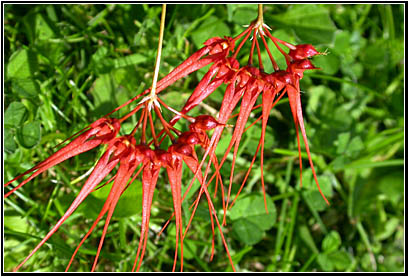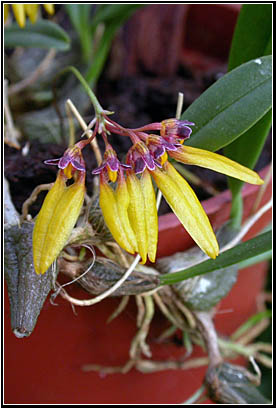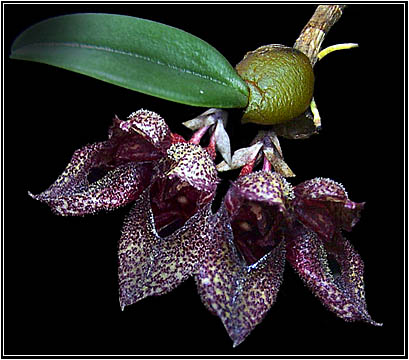|
The
genus Bulbophyllum
ON: How long have you been studying Bulbophyllum? RS: I studied Bulbo for over 15 years. Right at the moment the three types of Bulbophyllum flabelloveneris formerly known as B. purpurifolium are in flower. ON: Bulbophyllum has a wide distribution around the world. Where occur the most part species? RS: I think the most Bulbos occur in Southeast Asia. ON: Are there remarkable differences between those from Asia, Africa and America? RS: The species from Asia are more colorful and bigger flowered than the ones from Africa and America ON: In what kind of habitat they occur? All species are epiphyte? RS: Nearly all Bulbos are epiphytic but they have several needs in water and light and of course temperature ON: Nowadays there is a tendency to subdivide big genus. Do you think that Bulbophyllum should be revised? RS: I don't think that it is necessary to divide the genus. But some scientist will do this because of their molecular genetic research. ON: Do you agree with the genus Cirrhopetalum or you think it is just a section inside Bulbophyllum? RS: For me Cirrhopetalum is still inside of Bulbophyllum ON: An interesting characteristic is the lip is articulated, is there something with the kind of pollinators? Are they always flies? RS: Mostly flies are the pollinators. But the moving of lip, the flattering of the palae of the sepals and petal tips attract bees and birds too. They will transport in some cases the pollen too. ON: In your lecture you talked about species coming from Vietnam et the countries around. Do you think there is still a lot of species to be discovered in Asia, specially in this region? RS: I think that there are more species to be described especially from Vietnam and the region of Papua New Guinea. As I told in my lecture the Leiden team (Ed de Vogel and Andre Schuiteman) will describe more knew species in near future in the magazine journal für den Orchideenfreund. ON: What could you tell us to help the cultivation of those plants? RS: Bulbos can be grown in good light conditions 2000-3500 footcandles, they need good air circulation, humidity around 40 to 60 percent. They can grow in the potting material you use for your other orchids or you may grow them on slab of cork, fern, wood. But you will need humidity and water one time per day. Fertilizer may be used the same way as for the other orchids. ON: What are you preparing at this moment? RS: I work as an editor for a monograph on Dendrobium together with Timberpress. The book will be available later this year. I also do a magazine, see under www.orchideen-journal.de. ON: Thank you, Roland Schettler
Photos
by Roland Schettler |



